Mirrikh or Marrikh was originally a fierce underworld deity probably descended from the Babylonian god Nergal, with whom he also shared the attributes of fire, the desert and the planet Mars. The etymology of mirrīkh is not clear1, but he was also known as al-Muharriq, “the burner”. He was worshipped by Beduin tribes of eastern Arabia and southern Iraq, though he was also found under the name Harka in the deserts of Oman and as Arsuf (from the Canaanite god Reshef) in the far north of Arabia. All these iterations, personalisations of the scorching heat of the desert, were of a wrathful disposition and inclined to send plague when dissatisfied.2
The red planet was thus associated with war, just as it is in the classical tradition, and is one of two planets with negative influence, Saturn being the greater of the two—so Mars is referred to as النحس الأصغر al-naḥs al-aṣghar, “the minor misfortune”. It’s also called النجم القاهر al-najm al-qāhir: The Subduing Star.3
Picturing Mars (al-Mirrīkh المرّيخ)
For descriptions of the source objects, please refer to the first post in this series.
Mars is consistently depicted as a warrior fully kitted for battle, with armor, boots and helmet, though the exact design can vary to reflect local dress. Even more noticeable is that fact he usually holds aloft a sword in one hand while holding up a severed head by the hair in the other.
Mars is Planetary Lord of both Aries and Scorpio, and this iconography tends to persist in the images for these two signs, although for Scorpio the warrior can usually be seen holding up a scorpion by the tail instead of a head!
If images appear too small, open this post in a browser and you’ll be able to click on them to see them full-size.
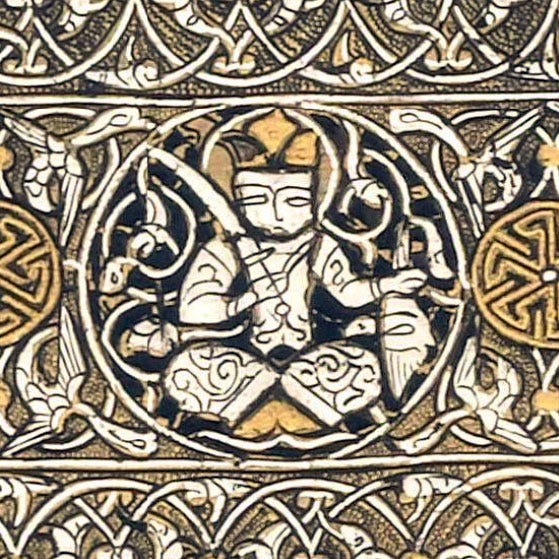

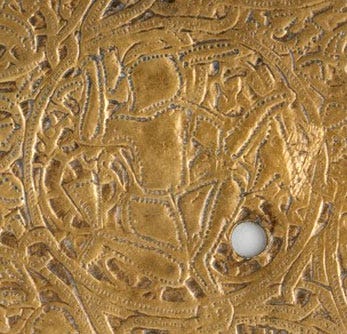























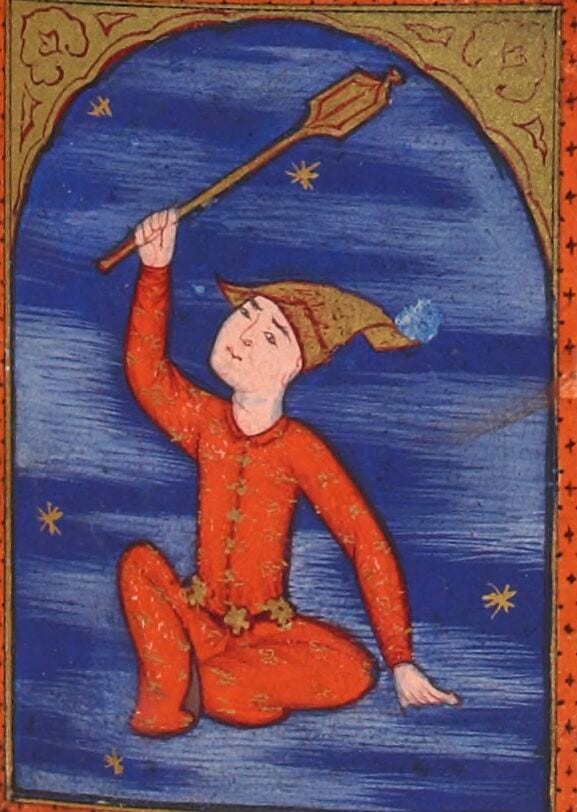
Sigil رسم
The modern symbol for Mars ♂︎ hasn’t changed since late Greek papyri, and always represented a shield crossed by a spear. The spear can be seen in Bianchini’s planisphere (2nd century AD) and is confirmed in Johannes Kamateros' 12th century Compendium of Astrology.4
The glyphs I have found on Astrolabe 1 (left) and in Ghāyat al-Hakīm (right), however, bear no resemblance to this.
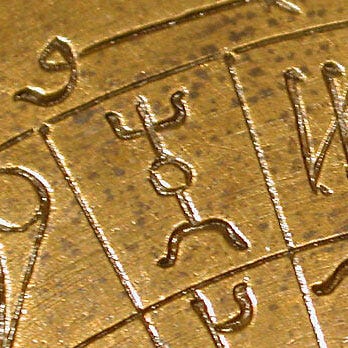

The Astrolabe glyph looks almost identical to a sigil found in an ancient Greek alchemical text5, below left, that is also found barely modified as a sigil for the metal iron6, below right:


As for the Ghaya symbols, discount the small loops at the ends of the strokes, which are features of magical sigla, and discount also the transformation of the central shape from circle into triangle, which is often an artefact of copying shapes freestyle by hand, and they start looking very much related to the above too, only stylised by successive shorthand (we only have copies of copies of the orginal manuscript).
To finish, here are some of the correspondences for Mars listed in Ghāyat al-Hakīm:
Languages: Persian الفارسية
Cloth: Damask الخزّ, the furs of rabbits الارانب, cheetahsالفهود 7 or dogs الكلاب
Taste: Bitter hot and dry المرّة الحارّة اليابسة
Places: Forts الحصون, citadels القلاع, war zones مواضع الحروب, fireplaces مواقد النيران, slaughterhouses مذابح الحيوان, the dens of predators مآوى السباع, courts of law for disputes مجالس الخصومات
Gemstones: Agate العقيق and any stone that is red with darkness in it احمر فيه دكنة (could be interpreted as “dark red”, or taken at face value)
Minerals/metals: Arsenic الزرنيخ, sulphur الكبريت, naphtha النفط, glass الزجاج, red copper النحاس الاحمر
Plants: All plants of a hot nature such as peppers الفلفل, spurge-olive المازريون, euphorbia الفربيون, scammony السقمونيا, rue الحرمل, cumin الكمّون, rocket الجرجير, sappanwood البقّم, jujube السدر, and every thorny tree such as buckthorn النبق, hawthorn الزعرور, safflower العصفر, and what makes good tinder
Pharmaceutics: Any drug with bad properties that kills with its intensity and heat ردئ الكيفية يقتل بحدّته وحرارته, and of perfumes red sandalwood الصندل الاحمر
Animals: Red camels الحمر من الابل, any predators with fangs and harmful claws, every harmful red insect, snakes الافاعى, scorpions العقارب, lizards الحراذين
Colours: Red and dark colours الحمرة والدكنة
Next stop: Jupiter!
I’ll just mention that etymologically it shares a root with مَرخ markh, “a tree whose wood easily ignites”, and the verb مَرَخ marakh means “to anoint [with oil]”, so the picture that forms is that al-mirrīkh is the one who is highly inflammable in that way, i.e. quick to anger.
Source: Mythology and religion of pre-Islamic Arabia: Deities, Spirits, Figures and Locations. I couldn’t access sources to verify all of this detail but enough of it to consider this broadly reliable.
The appearance of Mars during the foundation of the city of Cairo is the reason for its name of Al-Qahira. The reason it’s usually translated as “The Victorious” rather than “The Subduer” is that somewhere along the line it developed into the title “Subduer of Enemies”, in other words “victorious”.
I have already dealt in an earlier chapter with the woo-woo claim that it was ever “the cross over the circle” and symbolising “spirit constrained by matter”: see part 2 footnote 6.
Recorded by Berthelot in 1885 and reproduced by Gettings in his Dictionary of Occult, Hermetic and Alchemical Sigils, p166.
Recorded in the 17th-century Signa Lapidum pretiosorum, reproduced in Gettings p146. Mars is the lord of iron, so symbols for the latter are usually identical with or derived from symbols for the former.
Probably; the word is also used for leopards.





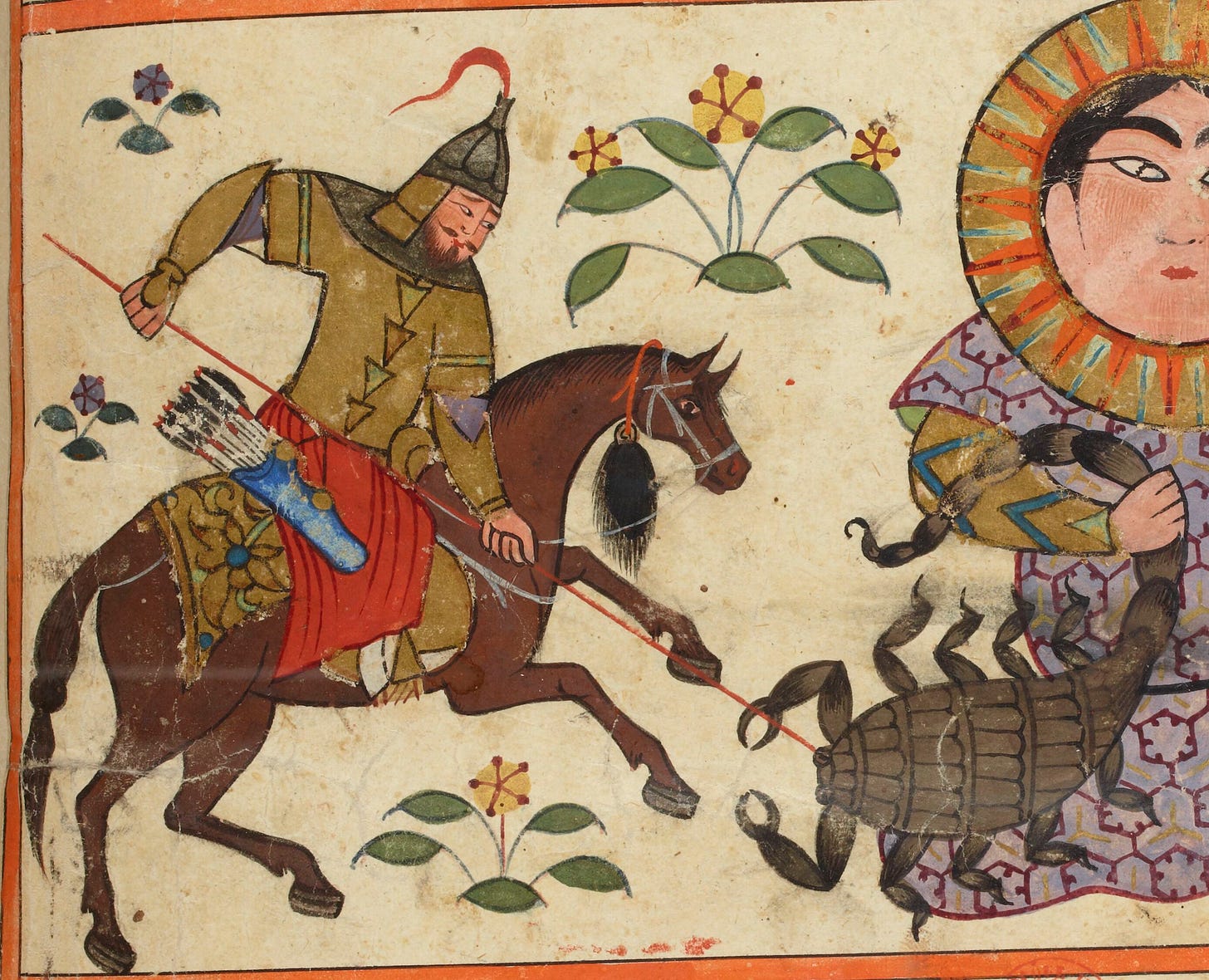
I really love your postings -- all of them. Bravo.